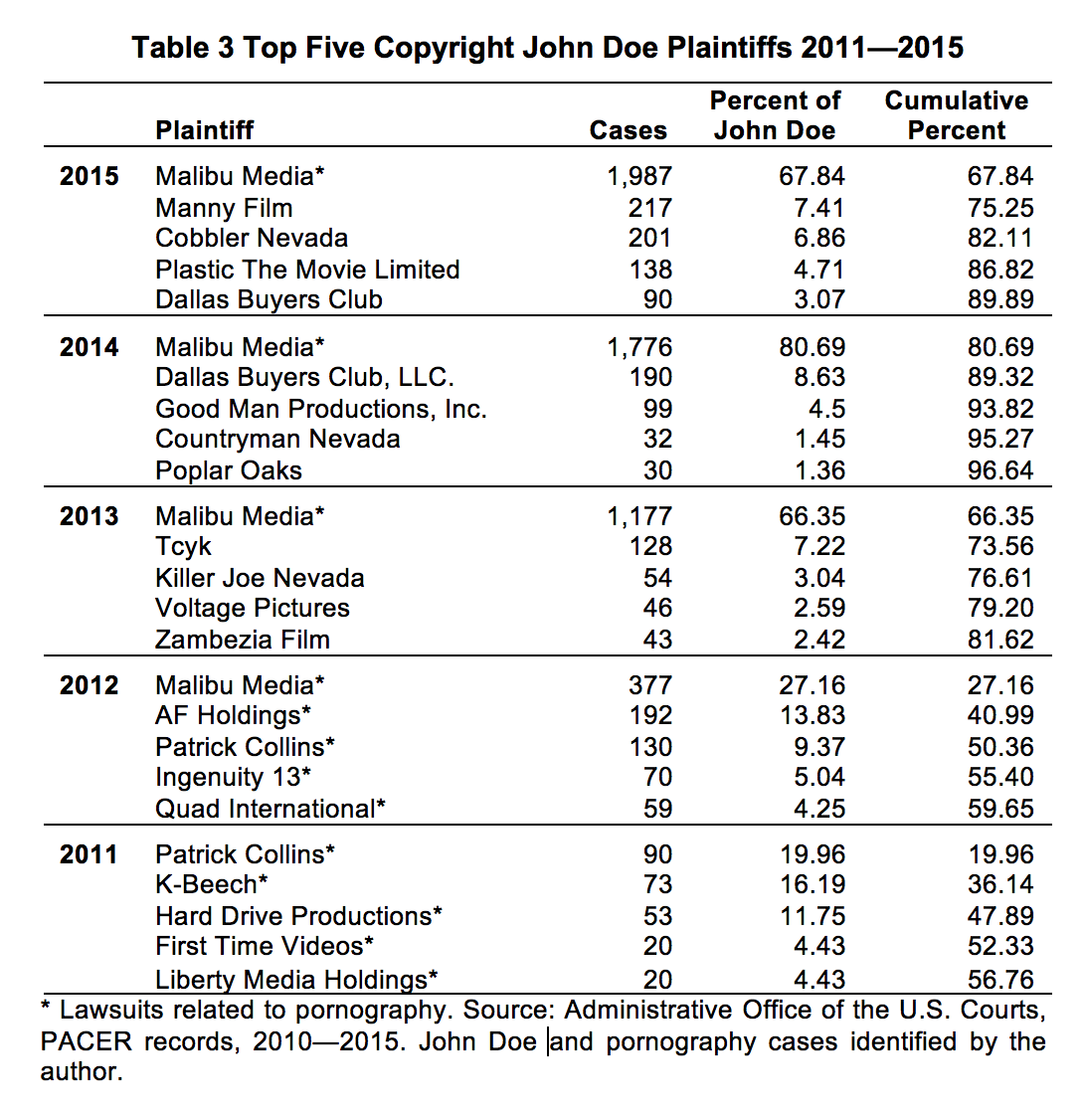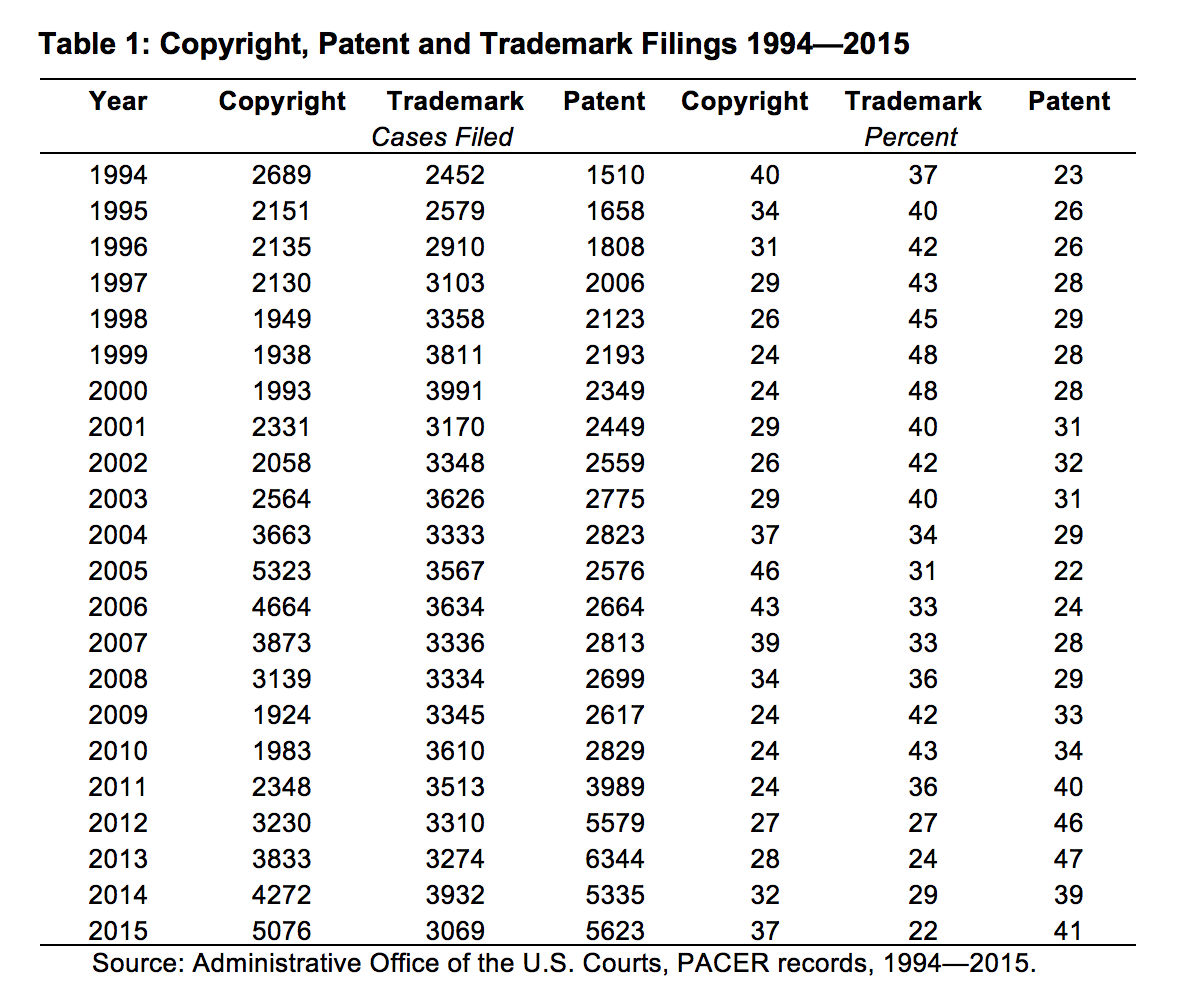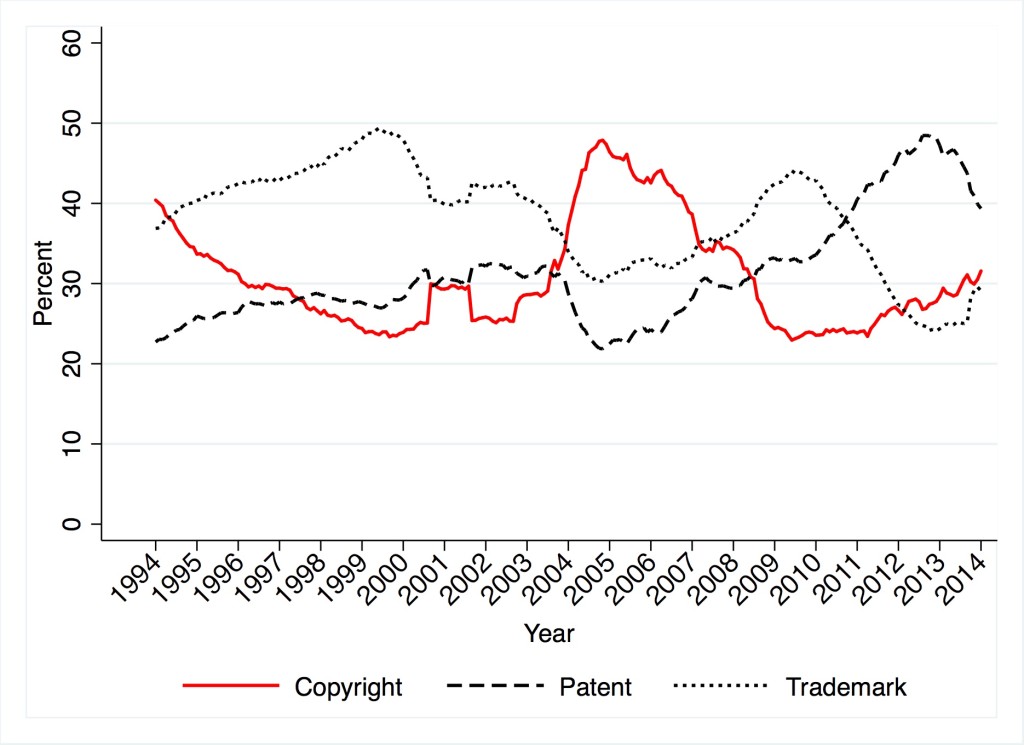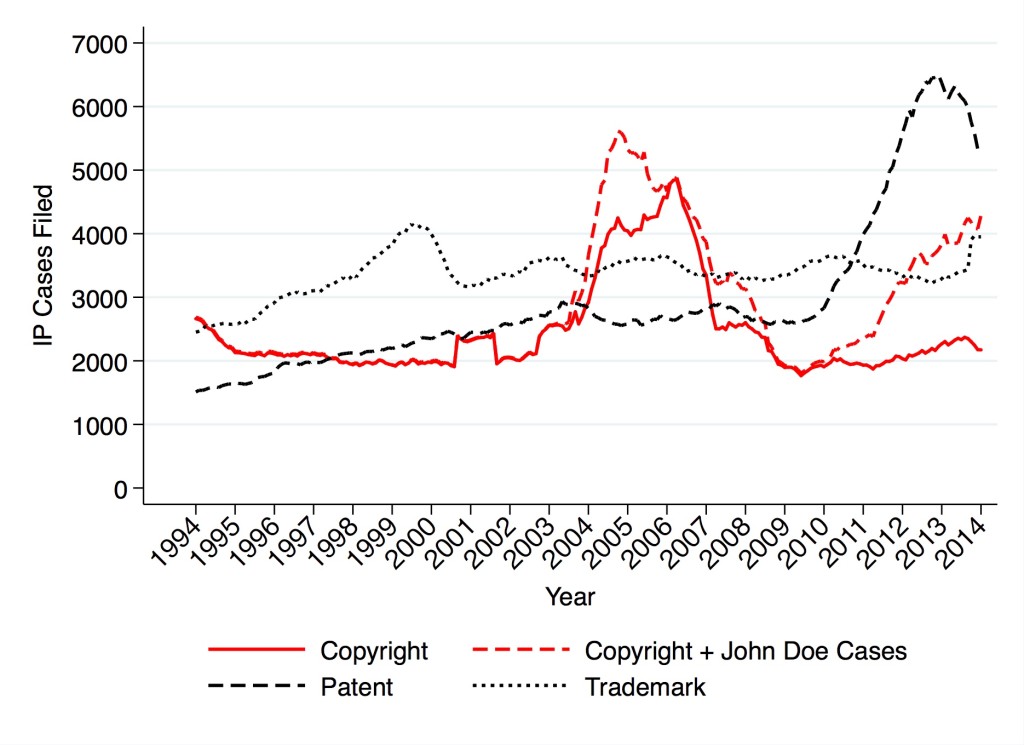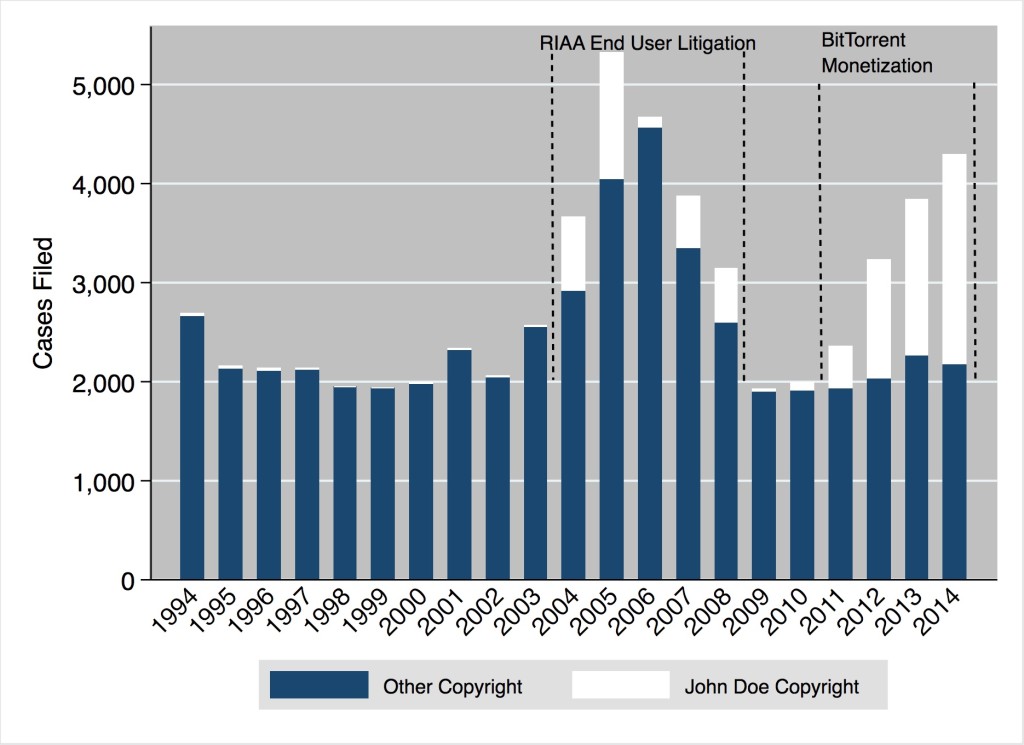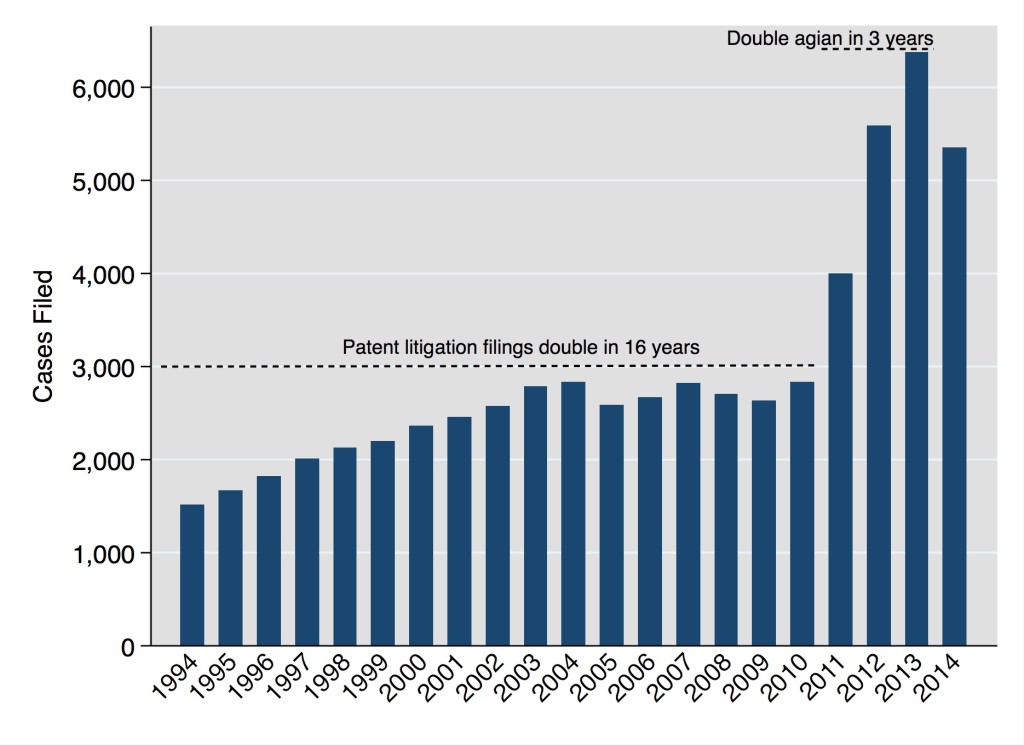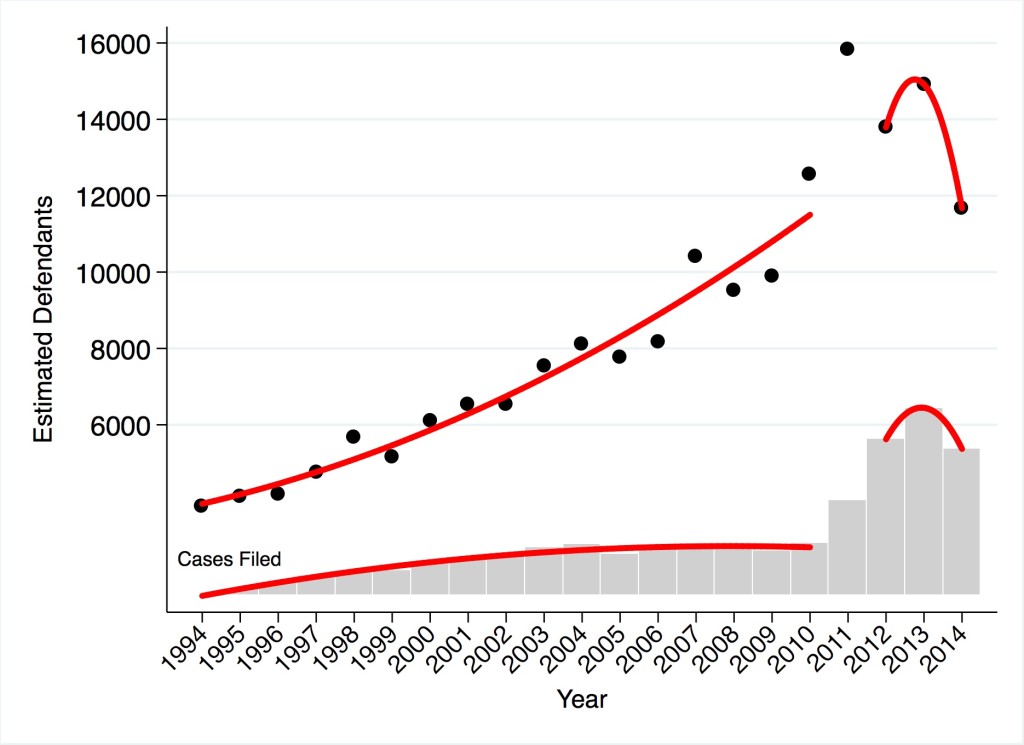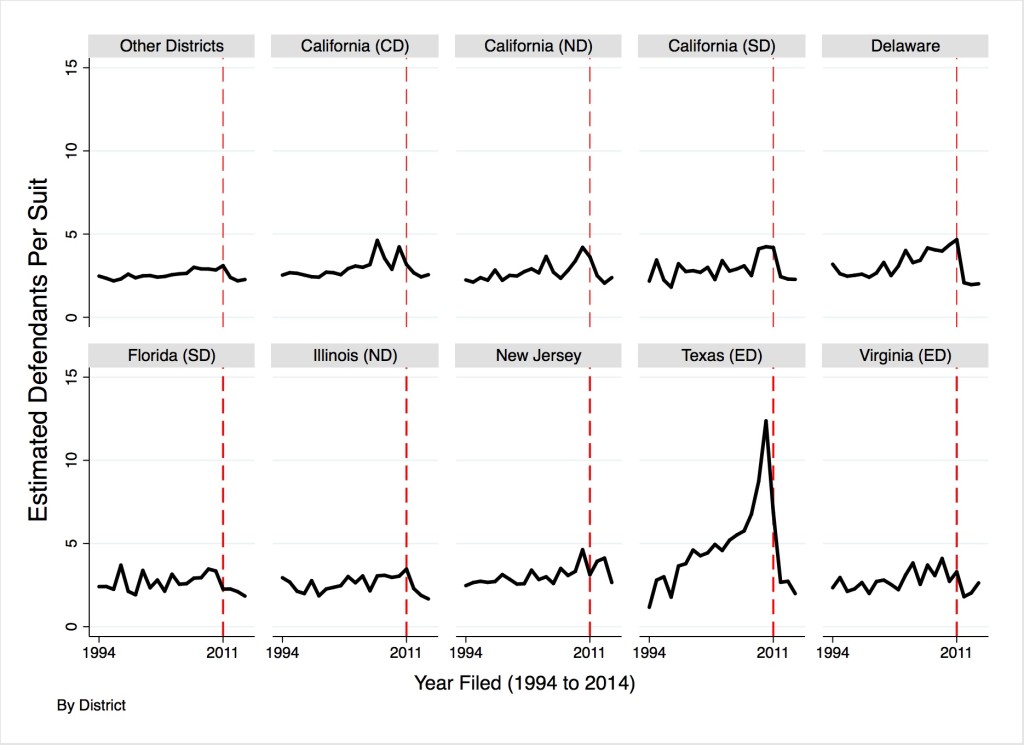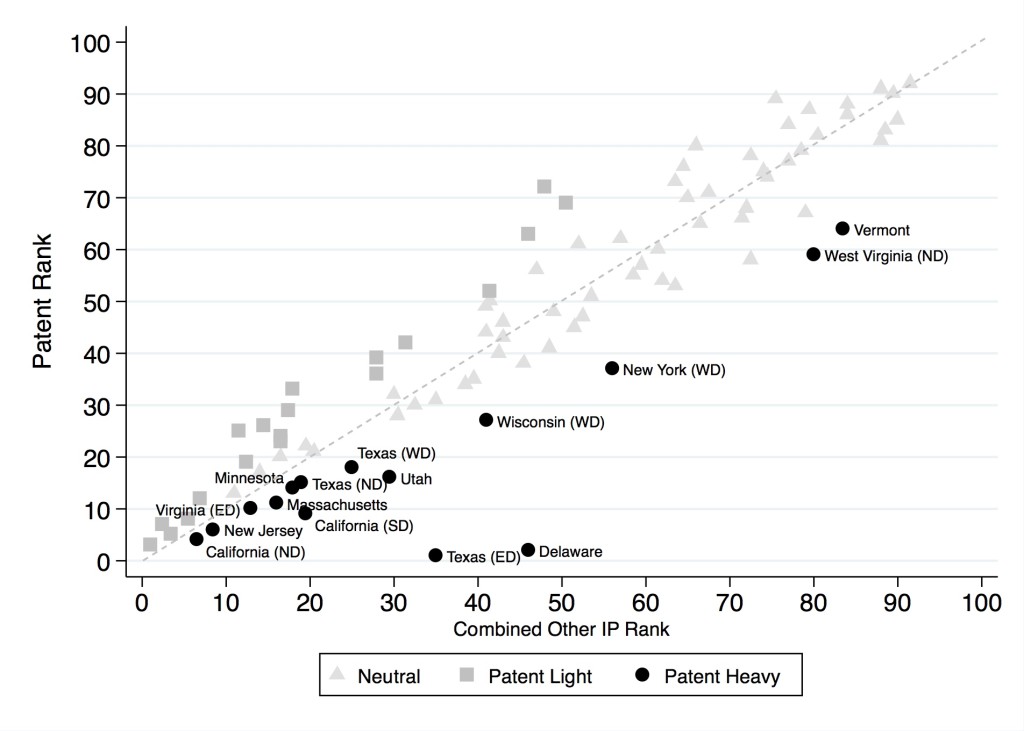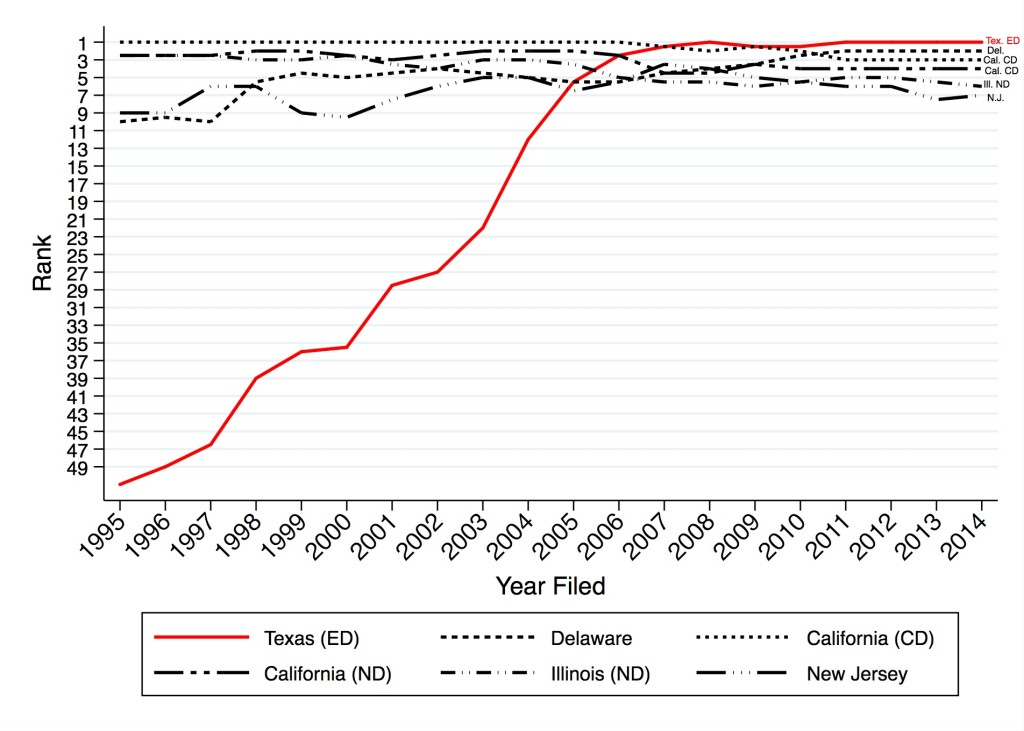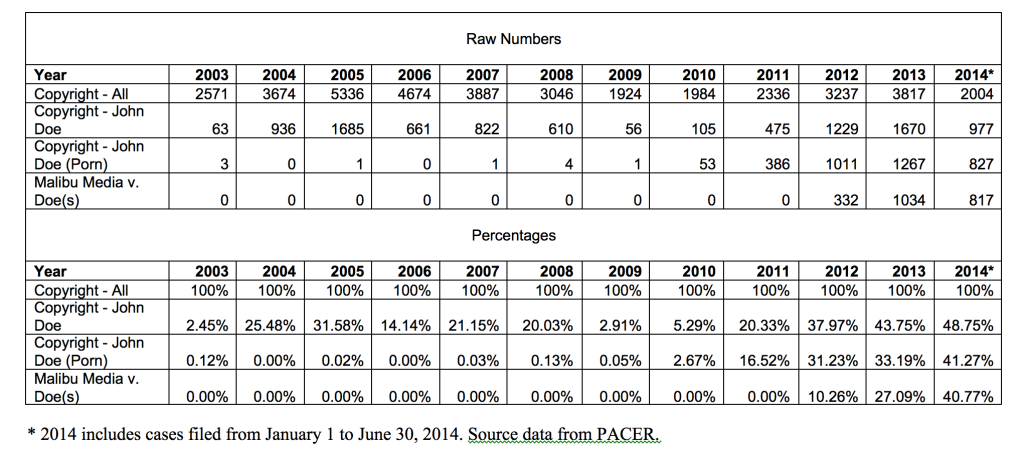Some context
In 2018 Jake Haskell and I published an article called “Defense Against the Dark Arts of Copyright Trolling” in the Iowa Law Review. The article focused on BitTorrent related litigation that accounted for roughly half of all copyright cases filed in the United States at the time. As we described in the article, in the typical BitTorrent case,
“the plaintiff’s claims of infringement rely on a poorly substantiated form pleading and are targeted indiscriminately at non-infringers as well as infringers. This practice is a subset of the broader problem of opportunistic litigation, but it persists due to certain unique features of copyright law and the technical complexity of Internet technology. The plaintiffs bringing these cases target hundreds or thousands of defendants nationwide and seek quick settlements priced just low enough that it is less expensive for the defendant to pay rather than to defend the claim, regardless of the claim’s merits.”
Given my interest in this topic, I get a lot of emails and phone calls asking about another high volume copyright plaintiff’s lawyer, Higbee & Associates.
I am writing this post so that people have something to go on without waiting for a response from me (which can often take a while, sorry).
Is Higbee & Associates a copyright troll?
Some people call Higbee & Associates (or the clients they represent) copyright trolls. Certainly, they seem more interested in monetizing infringement than simply stopping it. After all, they could use DMCA takedowns in most of these cases and it would be just as effective.
Fair point, but even if they are looking primarily to the rewards of the courthouse rather than the market place, they would no doubt respond that litigation is required to make people understand that photography is not free for the taking. The performing rights organization, ASCAP, files a lot of lawsuits for exactly this reason.
So, in terms of motive, the copyright troll label might not be a great fit, what about methods?
Higbee & Associates are a little different to the copyright trolls Jake and I discussed in Defense Against the Dark Arts of Copyright Trolling. As far as I know, they don’t make a habit of go after obvious non-infringers. Although they don’t seem to recognize many potential fair use arguments either. Also they don’t appear to rely on dodgy technology or bogus experts to make their case — a feature that is endemic of in the BitTorrent litigation.
However, Higbee does seem to send a lot of out letters of demand without much underlying depth. These letters often fail to provide a copyright registration. They often claim to represent a copyright owner who is not the author without evidencing any assignment of rights. You don’t need a registration to make a demand, but you absolutely need one to file a claim in federal court and to get statutory damages. So that seems a bit odd. Not connecting the dots between the person who took the photo and the client they say they represent is also a bit odd.
Moreover, the copyright troll label certainly fits with the sense of being ambushed that many defendants experience. I hear from a lot of these recipients. Receiving a letter from Higbee & Associates feels like an ambush because so many people don’t really understand how copyright works. It also feels like an ambush because the settlement amounts Higbee & Associates demand in a typical letter don’t seem to reflect the value of the underlying work.
Instead of demanding some multiple of the standard license fee for the work in question, Higbee will demand a settlement amount based on what they could get in court under copyright’s rather imprecise statutory damages rules. Which makes their oft noted failure to provide proof of registration even more interesting.
Assuming the work was registered at the relevant time, the prevailing plaintiff in copyright litigation can get statutory damages in the range of $750 to $150,000 per work infringed, regardless of the amount of actual damage. This is a pretty terrifying prospect for most accused infringers. But it gets worse. The real kicker is that if you fight the infringement accusation and lose, you risk just adding to your pain because if they are the prevailing party, the plaintiff has a good chance of getting their attorneys fees as well as statutory damages!
So, what to do?
Step one: figure out whether you have a good story to tell on the merits
You might have a case on the merits. Here are some examples:
- you paid for a license to use the photo (or you thought you did);
- you made fair use of the photo by using it as the foundation for commentary, parody or criticism (if you made changes to the photo that reinforce this transformative purpose, the merits of your fair use defense will be even clearer);
- the party Higbee & Associates represents does not actually own the photo;
- the photo was not registered with the U.S. Copyright Office before you started using it;
- you didn’t post the photo, one of your users did it. This gets complicated. You might be covered by the DMCA, but only if you jump through the right hoops including registering an agent with the Copyright Office every three years. If you are not covered by the DMCA, you still might not be responsible for infringing acts by your users, it depends on a number of issues too detailed to summarized here.
Arguments on the merits that won’t help:
- you didn’t post the photo, one of your employees did — sorry, you are responsible for your employees in a case like this.
- you didn’t know the photo was copyrighted — this doesn’t help as much as you might think.
- you thought that photos on the Internet were in the public domain — they aren’t.
- you were not making a profit on your website — this doesn’t help as much as you might think.
Step two: ask for more information
Request copy of copyright registration, the deposit material that accompanied application, and documents sufficient to show Higbee is authorized by copyright owner to act as agent.
Explain that any settlement you agree to will have to contain proposed settlement a warranty that Higbee is the duly authorized agent of the copyright owner, that their client owns the copyright asserted, and that such copyright is valid. If they won’t do this, why not?
Step two: If you realize now that you might have been infringing the photographer’s copyright
- Take down the photo and audit the rest of the images on your website.
- If the work was unregistered. Do what your conscience tells you is right. The reality is that it is not worthwhile for them to take this case to court unless they can show actual damages of more than a few hundred dollars.
- If the work was registered and they actually represent the copyright owner, make a reasonable settlement offer.
- What’s a reasonable offer? Based on the cases I have seen, probably, $1000 and go up to $1250 but your individual facts may vary.
- If the plaintiff won’t settle, don’t contest every point in the litigation. Instead try to keep everyone’s costs as low as possible; make an “offer of judgment” and hope that you get a reasonable judge who can see that there is no virtue in awarding more than $750 minimum in statutory damages. If you make this strategy clear to them, they should agree to a reasonable offer and move on to their next target.
Do you need a lawyer?
Probably, yes.
You could try to settle (or tell them to take a hike) by yourself, but without a lawyer representing you it’s hard to know how to respond to the arguments that the Higbee are going to throw back.
If you need a referral to a lawyer with experience in these matters, I can try to provide one. I don’t handle these cases myself. You should also know that because I am not your lawyer, any emails you send me are not going to be protected by attorney client privilege.
Good luck.




